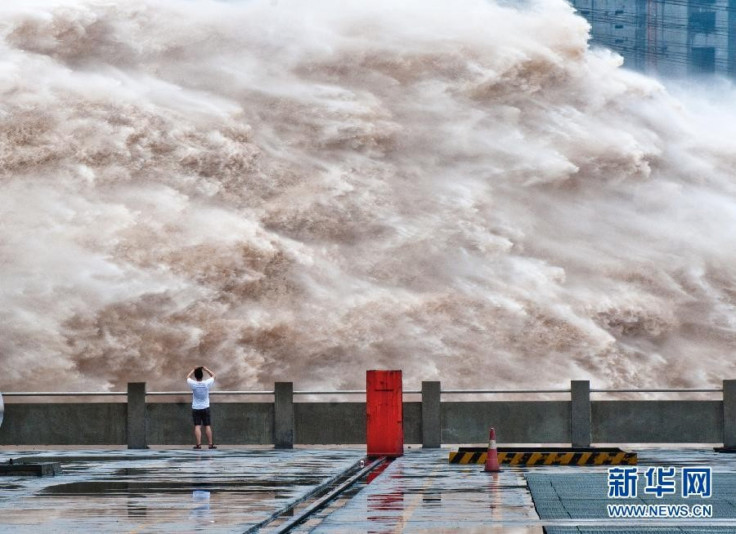China's Three Gorges Dam Fully Operational, But Still Controversial A Decade After Coming Online

It's a monument to colossal human engineering -- some would say to human fallacy -- an entire generation in the making.
Eighteen years after China first started construction, nine years after it first started producing electricity, the Three Gorges Dam -- the largest power station in the world by installed capacity -- is now, finally, fully operational.
On July 2, state media announced that the last hydroelectric generator connected to its 32 massive turbines had come online.
The expenses have been huge - an estimated $40 billion has been spent on its construction and the costs of compensating villagers who needed to be moved away from affected areas. Some experts think the 42 billion tons of water behind the dam is so heavy that it has actually affected the rotation of the planet (although only by a minuscule degree).
But even then, the costs -- economic, human, and environmental -- continue to tick up.
A project long thought to demonstrate modernity, the conquest of nature by man, the taming of the great waterways of China, is still creating unexpected consequences.
In April, the government estimated that it needed to move another 100,000 people away from areas near the dam. Doing so would bring the total figure of removed population to around 1.5 million. Unstable geology from the reservoir has continued to create landslides and tremors along areas next to the dam, increasing affected areas beyond the original parts flooded under the 600-kilometer (370-mile) long reservoir behind the dam wall.
Although the Three Gorges Dam now generates a massive 22.5 gigawatts of power, it is being questioned for its efficiency. Critics say the same amount of money could have been used on less environmentally destructive sources of energy, suggesting missed opportunities in alternative projects to improve efficiency, energy transportation, renewable sources, even coal power plants.
And now, unlike attitudes nearly 20 years ago, experts are speaking out against the dam, even asking for its removal. An opinion piece in 21CN, a web portal sponsored by state-run China Telecom, in mid-April even suggested that the dam should be blasted away and destroyed.
Another piece in China Business Journal Online called the construction a bottomless [spending] hole.
Almost everyone seems to have a bone to pick against the Dam.
Defense experts have called the place a prime target for terrorists, American missiles, or Taiwanese separatists. Historians have bemoaned the heavy archaeological costs of the dam - some 1,300 sites are now underwater.
Although the government has given a tacit acquiescence to statements on the Dam's rising unpopularity, it continues to argue that other benefits, such as regulating flooding along the Yangtze, warrant its upkeep.
Chinese engineers say the Dam is an effective means of regulating the flow of water into downstream areas on the Yangtze, where major cities and industrial centers are located, dampening the severity of floods and therefore saving countless lives and property.
State media reported in July of 2010 that high floodwaters reaching the dam reached flow rates of 70,000 cubic meters per second, or (2.5 million cubic feet per second), but outflow management from the dam meant that waters released downriver were only 30,000 cubic meters per second (1.4 million cubic feet per second).
On Friday, China Daily noted that new seasonal floodwaters reaching the dam had already reached 54,500 cubic meters per second (1.9 million cubic feet per second).
© Copyright IBTimes 2024. All rights reserved.





















